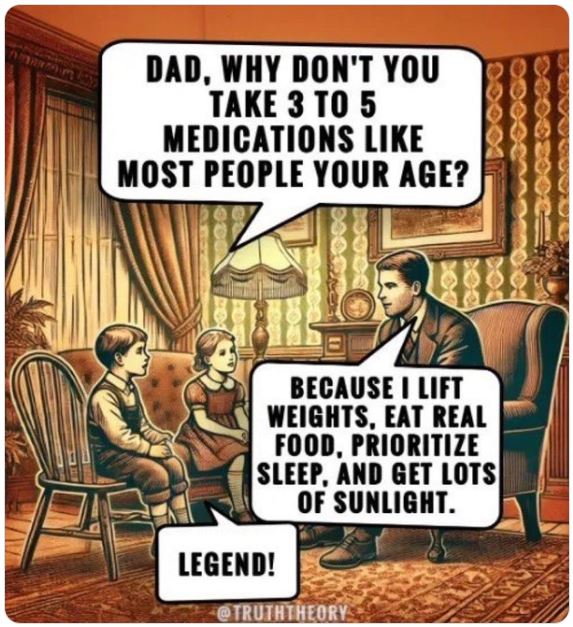There’s no doubt that EMF exposure is a significant health hazard that needs to be addressed on a public level. However, the recent rollout of 5G and other advanced wireless technologies may make it difficult. Therefore, it would be wise to focus on protecting yourself for now.
In addition to the recommendations mentioned by Pall, here’s a more comprehensive summary of EMF-reducing strategies you can implement:
Identify major sources of EMFs, such as your cellphone, cordless phones, Wi-Fi routers, Bluetooth headsets and other Bluetooth-equipped items, wireless mice, keyboards, smart thermostats, baby monitors, smart meters and the microwave in your kitchen. Ideally, address each source and determine how you can best limit their use.
Barring a life-threatening emergency, don’t give your child a cellphone or a wireless device of any type. Children are far more vulnerable to cellphone radiation than adults due to having thinner skull bones. Research29 also demonstrates that infants up to 25 months do not effectively learn language from videos, and that they learn best when taught through personal interaction.
Connect your computer to the internet via a wired Ethernet connection and be sure to put it in airplane mode. Also, avoid wireless keyboards, trackballs, mice, game systems, printers and portable house phones. Opt for the wired versions.
If you must use Wi-Fi, shut it off when not in use, especially at night when you’re sleeping. Ideally, work toward hardwiring your house so you can eliminate Wi-Fi altogether. If you have a notebook without any Ethernet ports, a USB Ethernet adapter will allow you to connect to the internet with a wired connection.
Avoid using wireless chargers for your cellphone, as they too will increase EMFs throughout your home. Wireless charging is also far less energy-efficient than using a regular charger, as it draws continuous power (and emits EMFs) whether you’re using it or not.
Shut off the electricity to your bedroom at night. This typically works to reduce electrical fields from the wires inside your walls unless there is an adjoining room next to your bedroom. If that is the case, you will need to use a meter to determine if you also need to turn off power in the adjacent room.
Use a battery-powered alarm clock, ideally one without any light.
If you still use a microwave oven, consider replacing it with a steam convection oven, which will heat your food as quickly and far more safely.
Avoid using “smart” appliances and thermostats that depend on wireless signaling. This would include all new “smart” TVs. They are called smart because they emit a Wi-Fi signal and, unlike your computer, you cannot shut the Wi-Fi signal off. Consider using a large computer monitor as your TV instead, as they don’t emit Wi-Fi.
Refuse a smart meter on your home if you can. If a smart meter is unavoidable, you can install a shield over it.30
Consider moving your baby’s bed into your room instead of using a wireless baby monitor. Alternatively, use a hard-wired monitor.
Replace CFL bulbs with incandescent bulbs. Not only do they emit unhealthy light, but more importantly, they will actually transfer current to your body just being close to the bulbs.
Avoid carrying your cellphone on your body unless in airplane mode and never sleep with it in your bedroom unless it is, again, in airplane mode. Even then, it can emit signals, which is why I put my phone in a Faraday bag.
When calling someone with your cellphone, use the speakerphone and hold the device at least 3 feet away from you. Seek to radically decrease your time on the cellphone. Instead, use VoIP software that you can use while connected to the internet via a wired connection.
Avoid using your cellphone and other electronic devices at least an hour (preferably several) before bed, as the blue light from the screen and EMFs both inhibit melatonin production. According to the Sleep Foundation, blue light from computer and cellphone usage increases the time it takes for you to fall asleep.31
The effects of EMFs are reduced by calcium-channel blockers, so make sure you’re getting enough magnesium. Most people are deficient in magnesium, which will worsen the impact of EMFs. According to Pall’s study, “Magnesium deficiency is often found in autism patients and magnesium salt supplements have been found to be helpful in autism treatment.”32
Increasing Nrf2, which is a biological hormetic (an agent ([substance or activity] that produces a beneficial effect in small doses and a harmful effect in higher doses) that upregulates superoxide dismutase, catalase and all the other beneficial intercellular antioxidants, is also helpful mainly because it lowers inflammation, improves your mitochondrial function and stimulates mitochondrial biogenesis, among other benefits.
You can activate Nrf2 by consuming Nrf2-boosting food compounds such as
sulforaphane from cruciferous vegetables,
foods high in phenolic antioxidants,
the long-chained omega-3 fats DHA and EPA,
carotenoids (especially lycopene),
sulfur compounds from allium vegetables,
isothiocyanates from the cabbage group and
terpenoid-rich foods.
Molecular hydrogen has been shown to target free radicals produced in response to radiation.33
I have done some data gathering and compiled a list of the foods highest in each of these mutrients.
Sulforaphane
Foods rich in sulforaphane, a compound known for its potential health benefits, primarily come from the cruciferous vegetable family.
Top Foods High in Sulforaphane
1. Broccoli Sprouts
Sulforaphane Content: Highest among all foods, containing 10 to 100 times more sulforaphane than mature broccoli.
Preparation Tip: Best consumed raw to maximize sulforaphane levels.
2. Broccoli
Sulforaphane Content: Significant amounts, though less than sprouts.
Preparation Tip: Eating it raw or lightly steamed preserves more sulforaphane compared to boiling.
3. Brussels Sprouts
Sulforaphane Content: High levels make them a great choice for boosting intake.
Preparation Tip: Steaming or roasting enhances flavor while retaining nutrients.
4. Cabbage
Sulforaphane Content: Contains glucosinolates that convert to sulforaphane.
Preparation Tip: Raw in salads or fermented (as sauerkraut) can enhance sulforaphane availability.
5. Cauliflower
Sulforaphane Content: Good source, similar to broccoli.
Preparation Tip: Raw or lightly cooked options are preferable.
6. Kale
Sulforaphane Content: Contains glucoraphanin, a precursor to sulforaphane.
Preparation Tip: Raw in salads or smoothies maximizes benefits.
7. Bok Choy
Sulforaphane Content: Another excellent source among cruciferous vegetables.
Preparation Tip: Can be eaten raw or lightly stir-fried.
8. Mustard Greens
Sulforaphane Content: Provides a notable amount of sulforaphane.
Preparation Tip: Can be used in salads or cooked dishes for added flavor and nutrition.
Including these foods in your diet can enhance your intake of sulforaphane, contributing to various health benefits such as improved heart health and potential cancer-fighting properties. For optimal results, focus on consuming these vegetables raw or minimally cooked to preserve their beneficial compounds.
Phenolic Antioxidants
Foods high in phenolic antioxidants, known for their health benefits, include a variety of fruits, vegetables, nuts, and beverages. Here’s a detailed list of some of the top sources:
Top Foods High in Phenolic Antioxidants
1. Berries
Black Chokeberry: Over 1,700 mg per 100 g.
Elderberries: 1,191 mg per 100 g.
Blackcurrants: 560 mg per 100 g.
Blueberries: Approximately 525 mg per 100 g.
Blackberries: About 248 mg per 100 g.
Strawberries: Around 225 mg per 100 g.
Raspberries: About 126 mg per 100 g.
2. Nuts and Seeds
Flaxseeds: 1,528 mg per 100 g.
Chestnuts: 1,215 mg per 100 g.
Hazelnuts: 495 mg per 100 g.
Pecans: 493 mg per 100 g.
Almonds: 187 mg per 100 g.
3. Spices and Herbs
Cloves: 542 mg per ounce.
Dried Peppermint: 427 mg per ounce.
Star Anise: 195 mg per ounce.
4. Cocoa and Chocolate
Cocoa Powder: Approximately 516 mg per tablespoon.
Dark Chocolate: About 249 mg per tablespoon; lower in milk chocolate.
5. Vegetables
Globe Artichokes: 260 mg per 100 g.
Red Chicory: Up to 235 mg per 100 g.
Red Onions: About 168 mg per 100 g.
Spinach: Approximately 119 mg per 100 g.
6. Beverages
Red Wine: Contains around 101 mg of polyphenols in a typical serving, with variations based on type and processing.
Coffee and Tea: Both are significant sources of polyphenols, though specific amounts can vary widely depending on preparation methods.
7. Other Notable Sources
Olives (Black): Approximately 113 mg of polyphenols in a serving of five olives (20 g).
Soy Products (e.g., Soy Flour): Up to 466 mg per 100 g for soy flour; tempeh has about 148 mg.
These foods not only provide high levels of phenolic antioxidants but also contribute to overall health by potentially reducing the risk of chronic diseases such as heart disease and cancer. Incorporating a variety of these foods into your diet can enhance your antioxidant intake effectively.
DHA and EPA
Foods high in DHA (Docosahexaenoic Acid) and EPA (Eicosapentaenoic Acid), both essential omega-3 fatty acids, are primarily found in fatty fish and certain seafood.
Top Foods High in DHA and EPA
1. Fatty Fish
Salmon:
DHA: 2.48g per 6 oz fillet
EPA: 0.59g per 6 oz fillet
Mackerel:
DHA: 1.58g per 5 oz fillet
EPA: Approximately equal to DHA content.
Tuna (Bluefin):
DHA: 1.94g per 6 oz fillet
EPA: Similar amounts to DHA.
Sardines (Canned):
DHA: 0.76g per cup
EPA: Approximately equal to DHA content.
2. Shellfish
Mussels:
DHA: 0.43g per 3 oz serving
EPA: Approximately equal to DHA.
Oysters:
DHA: 0.43g per 3 oz serving
EPA: Similar amounts as DHA.
3. Other Seafood
Squid (Calamari):
DHA: 0.59g per cup cooked
EPA: Generally lower than DHA.
Fish Roe (Caviar):
DHA: 0.19g per tablespoon
EPA: Higher concentrations compared to other fish.
4. Fish Oils
Cod Liver Oil:
DHA: Up to 0.49g per teaspoon
EPA: Similar levels as DHA.
Menhaden Oil:
High in both DHA and EPA, around 1.16g of DHA per tablespoon.
5. Other Notable Sources
Anchovies:
DHA: Approximately 0.77g per 3 oz serving.
Herring:
DHA: About 1.71g per serving.
Incorporating these foods into your diet can significantly enhance your intake of omega-3 fatty acids, which are linked to various health benefits, including improved heart health and cognitive function. For optimal health benefits, aim for regular consumption of these fatty fish and seafood options.
Carotenoids
Foods high in carotenoids are primarily colorful fruits and vegetables, particularly those that are orange, yellow, and dark green. Here’s a list of the top sources of carotenoids, focusing on beta-carotene, lutein, zeaxanthin, and lycopene:
Top Foods High in Carotenoids
1. Orange and Yellow Vegetables
Sweet Potatoes:
Beta-Carotene: 23,018 mcg per cup (baked)
Carrots:
Beta-Carotene: 10,605 mcg per cup (cooked)
Butternut Squash:
Beta-Carotene: 9,369 mcg per cup (cooked)
Pumpkin:
Beta-Carotene: Approximately 17 mg per cup (puree).
2. Leafy Greens
Spinach:
Beta-Carotene: 1,688 mcg per cup (cooked); also high in lutein and zeaxanthin.
Kale:
Contains significant amounts of lutein and zeaxanthin.
3. Fruits
Cantaloupe:
Beta-Carotene: 3,575 mcg per cup.
Apricots:
Beta-Carotene: 1,696 mcg per cup.
Mango:
Beta-Carotene: About 1,056 mcg per cup.
4. Red and Yellow Peppers
Red Bell Peppers:
Beta-Carotene: 2,420 mcg per cup (raw).
5. Other Notable Sources
Tomatoes:
High in lycopene; canned tomato products have higher bioavailability.
Broccoli:
Beta-Carotene: 1,449 mcg per cup (cooked).
Peas (Podded):
Beta-Carotene: 1,216 mcg per cup (cooked).
Incorporating a variety of these colorful fruits and vegetables into your diet can enhance your intake of carotenoids, which are beneficial for eye health and may reduce the risk of chronic diseases. Aim to consume these foods with a small amount of healthy fat to improve absorption of carotenoids.
Sulfur Compounds
Foods high in sulfur compounds are important for various bodily functions and health benefits.
Top Foods High in Sulfur Compounds
1. Allium Vegetables
Garlic: Known for its high sulfur content, particularly allicin.
Onions: Including shallots, leeks, and scallions, these vegetables are rich in sulfur compounds.
2. Cruciferous Vegetables
Broccoli: Contains glucosinolates, which convert to sulfur compounds.
Cauliflower: Similar to broccoli, it is high in sulfur.
Brussels Sprouts: Another excellent source of sulfur-rich compounds.
Cabbage: Offers significant amounts of sulfur.
3. Protein Sources
Meat: Especially red meat and organ meats, which are rich in sulfur-containing amino acids like methionine and cysteine.
Poultry: Chicken and turkey provide good amounts of sulfur.
Fish and Seafood: Crustaceans (like crab, lobster, and shrimp) and fish (like cod and haddock) are notable sources.
4. Dairy Products
Milk, Yogurt, and Cheese: These contain sulfur-containing amino acids.
5. Legumes
Chickpeas, Lentils, and Kidney Beans: These plant-based proteins are good sources of sulfur.
6. Nuts and Seeds
Brazil Nuts: Highest in sulfur among nuts.
Almonds and Sunflower Seeds: Also contribute to dietary sulfur intake.
7. Other Sources
Eggs: Both egg whites and yolks are rich in sulfur.
Certain Fruits: While fruits generally contain lower levels of sulfur, dried fruits like raisins can have moderate amounts.
Incorporating a variety of these foods into your diet can help ensure adequate intake of sulfur compounds, which play crucial roles in detoxification, antioxidant defense, and overall health. Cooking methods can affect the availability of these compounds; for example, consuming garlic raw maximizes its health benefits.
Isothiocyanates
Isothiocyanates are sulfur-containing compounds found primarily in cruciferous vegetables. These compounds are known for their potential health benefits, including anti-cancer properties.
Top Foods High in Isothiocyanates
1. Cruciferous Vegetables
Broccoli: Contains significant amounts of glucoraphanin, which converts to sulforaphane, a type of isothiocyanate.
Brussels Sprouts: Rich in various isothiocyanates.
Cabbage: Both green and red varieties are good sources.
Cauliflower: Another excellent source of glucosinolates that convert to isothiocyanates.
Kale: High in glucosinolates, contributing to isothiocyanate levels.
Bok Choy: Contains notable amounts of isothiocyanates.
2. Other Vegetables
Radishes: Particularly black radishes, which are high in isothiocyanate content.
Mustard Greens: These leafy greens are rich in glucosinolates that yield isothiocyanates.
Turnips: Another cruciferous vegetable contributing to isothiocyanate intake.
3. Condiments and Spices
Horseradish: Known for its pungent flavor and high isothiocyanate content.
Wasabi: Similar to horseradish, it contains potent isothiocyanates.
Incorporating these foods into your diet can enhance your intake of isothiocyanates, which may contribute to various health benefits, including cancer prevention and improved detoxification processes. For maximum benefits, consume these vegetables raw or lightly cooked to preserve their beneficial compounds .
Terpenoids
Foods high in terpenoids, which are aromatic compounds known for their potential health benefits, can be found in a variety of fruits, vegetables, herbs, and spices.
Top Foods High in Terpenoids
1. Citrus Fruits
Lemons: Rich in limonene, a common terpenoid.
Oranges: Also high in limonene and other terpenes.
Grapefruits: Contain significant amounts of various terpenoids.
2. Herbs and Spices
Basil: Contains several terpenoids, including eugenol and linalool.
Oregano: High in carvacrol and thymol, both terpenoids.
Thyme: Rich in thymol, contributing to its antimicrobial properties.
Rosemary: Contains rosmarinic acid and other terpenes.
3. Other Fruits
Pineapple: Contains various terpenoids contributing to its aroma and flavor.
Mango: Rich in monoterpenes like myrcene.
4. Vegetables
Carrots: Contain terpenoids that contribute to their flavor and aroma.
Tomatoes: High in lycopene, a type of carotenoid with terpenoid characteristics.
5. Essential Oils
Many essential oils derived from plants contain high concentrations of terpenoids, such as:
Peppermint Oil: Contains menthol and menthone.
Tea Tree Oil: Rich in terpinen-4-ol.
6. Other Notable Sources
Ginger: Contains zingiberene and other terpenoids.
Garlic: While primarily known for sulfur compounds, it also contains some terpenoids.
Incorporating these foods into your diet can enhance your intake of terpenoids, which are associated with various health benefits, including anti-inflammatory and antioxidant effects. Fresh herbs and spices are particularly effective at providing these compounds, so consider adding them to your meals for both flavor and health benefits.
Finish reading: https://articles.mercola.com/sites/articles/archive/2024/09/26/emf-exposure-autism.aspx





